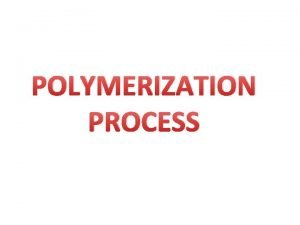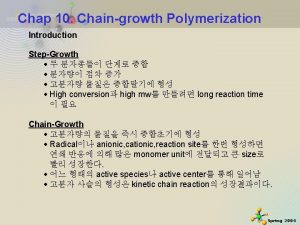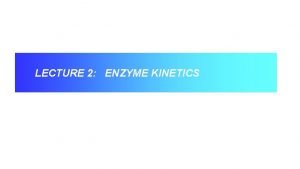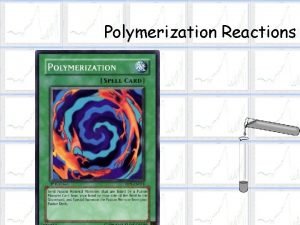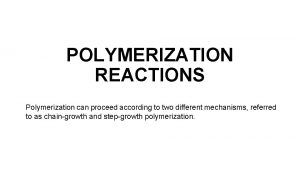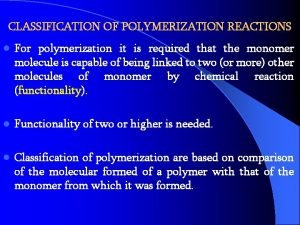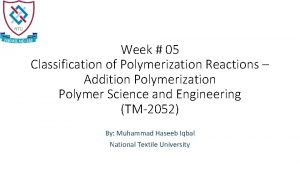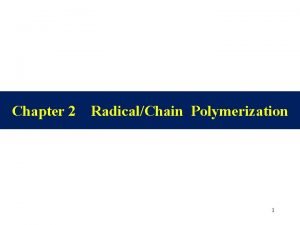Polymerization Reactions The simplest way to catalyze the







- Slides: 7

Polymerization Reactions The simplest way to catalyze the polymerization reaction that leads to an addition polymer is to add a source of a free radical to the monomer. The free radical is reactive, short-lived components that contain one or more unpaired electrons. In the presence of a free radical, addition polymers form by a chain-reaction mechanism that contains chain-initiation, chainpropagation, and chain- termination steps.

Free Radical • Chain Initiation • A source of free radicals is needed to initiate the chain reaction. In the presence of either heat or light, these peroxides decompose to form a pair of free radicals that contain an unpaired electron.

Free Radical Chain Propagation The free radical produced in the chain-initiation step adds to an alkene to form a new free radical. The product of this reaction can then additional monomers in a chain reaction.

Free Radical Chain Termination Whenever pairs of radicals combine to form a covalent bond, the chain reactions carried by these radicals are terminated.

Anionic Polymerization • Addition polymers can also be made by chain reactions that proceed through intermediates that carry either a negative or positive charge. • When the chain reaction is initiated and carried by negatively charged intermediates, the reaction is known as anionic polymerization. • Like free-radical polymerization these chain reactions take place via chain-initiation, chain-propagation, and chain-termination steps. • The reaction is initiated by a Grignard reagent or alkyllithium reagent, which can be thought of a source of a negatively charged CH 3 - or CH 3 CH 2 - ion.

Continue…. Anionic Polymerization The CH 3 - or CH 3 CH 2 - ion from one of these metal alkyls can attack an alkene to form a carbon bond.

Continue…. Anionic Polymerization The product of this chain-initiation reaction is a new carbanion that can attack another alkene in a chainpropagation step. The chain reaction is terminated when the carbanion reacts with traces of water in the solvent in which the reaction is run.
 Bulk polymerization
Bulk polymerization Step-growth polymerization
Step-growth polymerization General principles of catalysis
General principles of catalysis Section 2 classifying chemical reactions worksheet answers
Section 2 classifying chemical reactions worksheet answers Types of reactions
Types of reactions Section 2 reinforcement classifying chemical reactions
Section 2 reinforcement classifying chemical reactions Chemistry unit 5 reactions balancing reactions worksheet
Chemistry unit 5 reactions balancing reactions worksheet Balancing redox reactions in acidic solution
Balancing redox reactions in acidic solution
